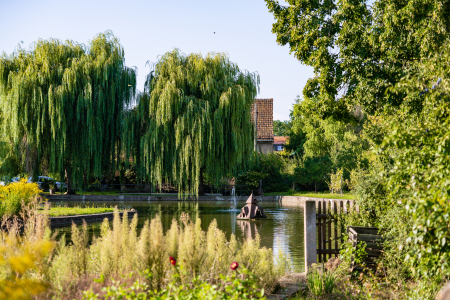Historic village green Naundorf
Naundorf was settled in the course of Frankish colonisation and was first mentioned in a document in 1144. The name Naundorf refers to the new foundation of the village.
The village green is located in a flood-free oxbow lake of the Elbe. The high turnover of farm owners suggests that the village was poor. A blacksmith is first mentioned in 1654 and a wheelwright in 1688. A grocer and a baker settled later in the 19th century.
Viticulture has been practised on the Naundorf land since the beginning of the 15th century. At that time, almost every farm had a wine press. However, due to frequent crop failures, viticulture almost came to a standstill around 1800.
In 1783, the community built its first schoolhouse on the Anger and soon afterwards a poorhouse.
The village has always belonged to the parish of Kötzschenbroda. The desire for its own parish church led to the construction of St John's Chapel in 1907.
Horticulture gains increasing economic importance, with good sales opportunities thanks to the connection to the railway.
Increased industrialisation begins with the designation of a factory district on the border with Kötitz. The last quarter of the 19th century also saw a strong increase in the number of inhabitants.
In 1923, Naundorf is united with Zitzschewig, Fürstenhain and Kötzschenbroda to form the large municipality of Kötzschenbroda.
Tip:
On the village green stele in Naundorf you will find another QR code for the audio story of the "Feuerreiter zu Naundorf".
This might also be of interest to you:
>> Treasures from the town archive
>> Town history
>> Histories


